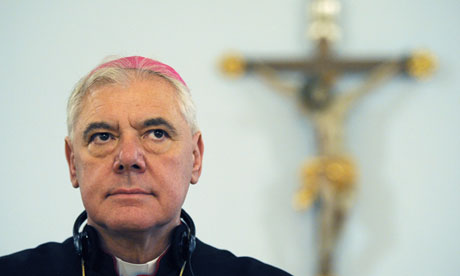In May of 2005, Archbishop William Levada—who had headed the Archdioceses of Portland (Oregon) and San Francisco—was appointed prefect of the Congregation for the Doctrine of the Faith. In July of 2011, having reached the age of 75, Cardinal Levada duly submitted his resignation from that important curial post. Almost a year later, on July 2, the Holy See announced that Levada’s successor at the CDF would be Bishop Gerhard Ludwig Müller of Regensburg.
This widely anticipated appointment was greeted by the liberal theological establishment in Germany with howls of “Panzerkardinal!” (as though Müller were so belligerently authoritarian that he would arrive in St. Peter’s Square in an armored tank) and by ultra-conservative Catholics with the equivalent of a negative ad campaign calling Müller’s orthodoxy into question on the basis of a few passages from his voluminous writings.
To paraphrase a remark that G.K. Chesterton once made about the contradictory accusations leveled at the Catholic Church: Bishop Müller must have done something right!
Biography
Gerhard Ludwig Müller was born in Mainz-Finthen on December 31, 1947, one of four children of a working-class family. He studied philosophy and theology in Mainz, Munich, and Freiburg im Breisgau and in 1977 completed a dissertation on the subject of Dietrich Bonhoeffer’s sacramental theology. His doctoral advisor was Professor (now Cardinal) Karl Lehmann, who had earned his own doctorate under Karl Rahner, SJ, an influential expert at Vatican II.
After his ordination in 1978 Müller served as assistant priest in three parishes and taught religious education in the secondary schools. In order to qualify as a professor of theology, he wrote a second doctoral thesis in 1985 (again under Lehmann) on Catholic devotion to the saints. He was appointed Professor of Catholic Dogmatic Theology at the Ludwig-Maximilian University in Munich in 1986, a position that he held for 16 years. Read more
Sources
